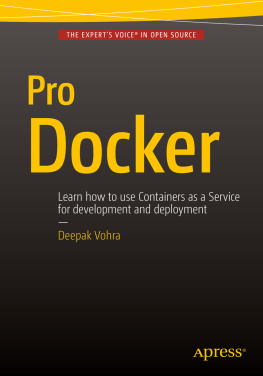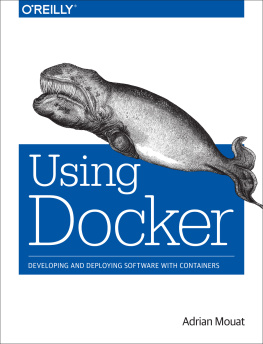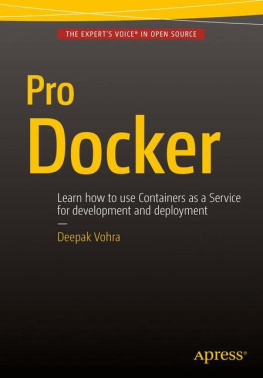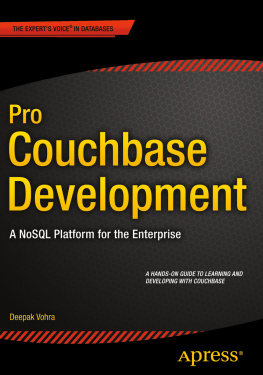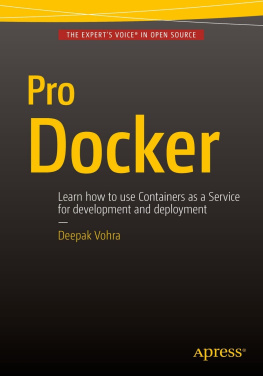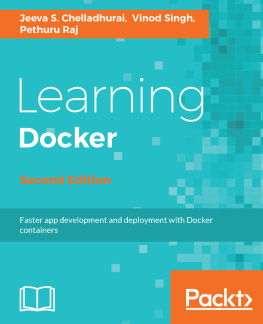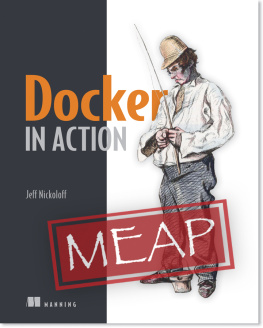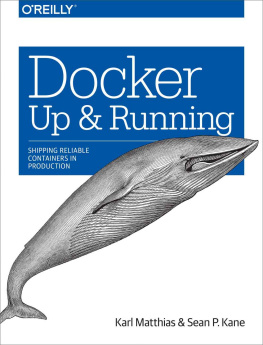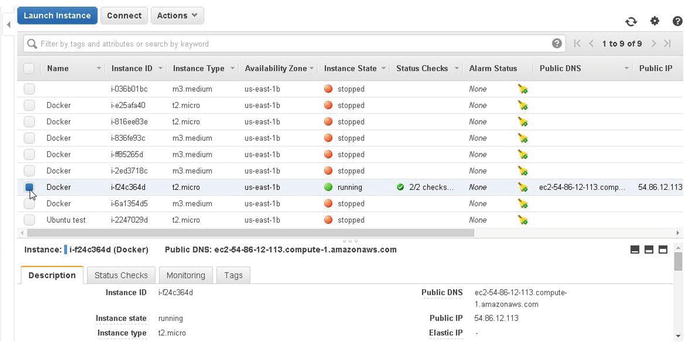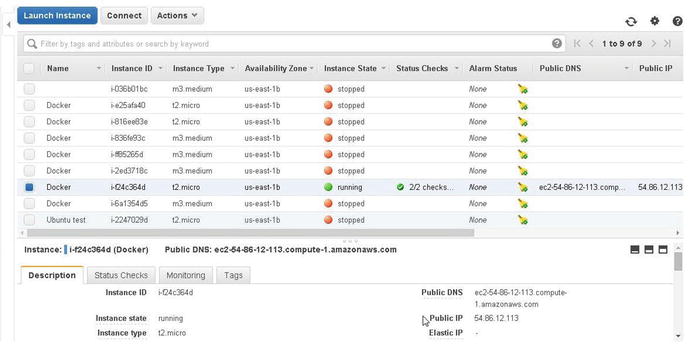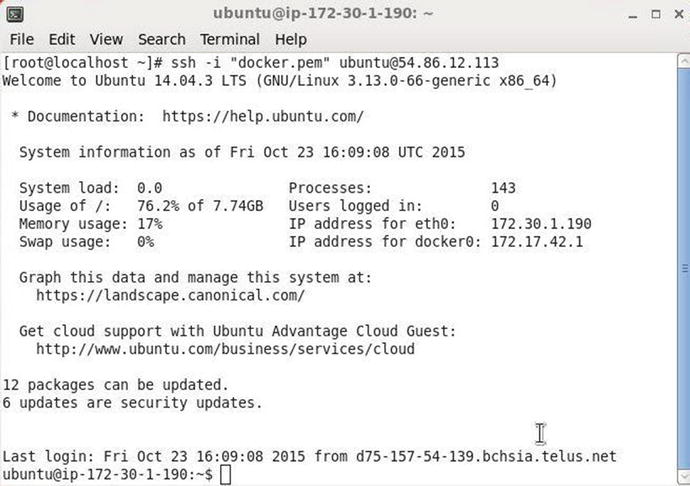Vohra Deepak. - Pro Docker: Learn how to use Containers as a Service for development and deployment
Here you can read online Vohra Deepak. - Pro Docker: Learn how to use Containers as a Service for development and deployment full text of the book (entire story) in english for free. Download pdf and epub, get meaning, cover and reviews about this ebook. genre: Computer / Science. Description of the work, (preface) as well as reviews are available. Best literature library LitArk.com created for fans of good reading and offers a wide selection of genres:
Romance novel
Science fiction
Adventure
Detective
Science
History
Home and family
Prose
Art
Politics
Computer
Non-fiction
Religion
Business
Children
Humor
Choose a favorite category and find really read worthwhile books. Enjoy immersion in the world of imagination, feel the emotions of the characters or learn something new for yourself, make an fascinating discovery.
- Book:Pro Docker: Learn how to use Containers as a Service for development and deployment
- Author:
- Genre:
- Rating:4 / 5
- Favourites:Add to favourites
- Your mark:
Pro Docker: Learn how to use Containers as a Service for development and deployment: summary, description and annotation
We offer to read an annotation, description, summary or preface (depends on what the author of the book "Pro Docker: Learn how to use Containers as a Service for development and deployment" wrote himself). If you haven't found the necessary information about the book — write in the comments, we will try to find it.
Docker is an open standards platform for developing, packaging and running portable distributed applications. Using Docker, developers and sysadmins may build, ship and run applications on any platform such as a PC, the cloud, data center or a virtual machine. Getting all the required dependencies for a software application including the code, the runtime libraries, and the system tools and libraries is often a challenge when developing and running an application. Docker simplifies the application development and execution by packaging all the required software for an application including the dependencies into a single software unit called a Docker image that may be run on any platform and environment.In this fast-paced book on the Docker open standards platform for developing, packaging and running portable distributed applications, Deepak Vorha discusses how to build, ship and run applications on any platform such as a PC, the cloud, data center or a virtual machine. He describes how to install and create Docker images. and the advantages off Docker containers.The remainder of the book is devoted to discussing using Docker with important software solutions. He begins by discussing using Docker with a traditional RDBMS using Oracle and MySQL. Next he moves on to NoSQL with chapter on MongoDB Cassandra, and Couchbase. Then he addresses the use of Docker in the Hadoop ecosystem with complete chapters on utilizing not only Hadoop, but Hive, HBase, Sqoop, Kafka, Solr and Spark.What You Will Learn:
How to install a Docker image;
How to create a Docker container;
How to run an Application in a Docker Container;
Use Docker with Apache Hadoop Ecosystem;
Use Docker with NoSQL Databases;
Use Docker with RDBMS.Who This Book Is For:
Apache Hadoop Developers. Database developers. NoSQL Developers. iPAD Amazon Kindle, PC , Cool Reader (EPUB), Calibre (EPUB, MOBI, AZW3), Adobe Digital Editions (EPUB), FBReader (EPUB, MOBI, AZW3).
Vohra Deepak.: author's other books
Who wrote Pro Docker: Learn how to use Containers as a Service for development and deployment? Find out the surname, the name of the author of the book and a list of all author's works by series.

